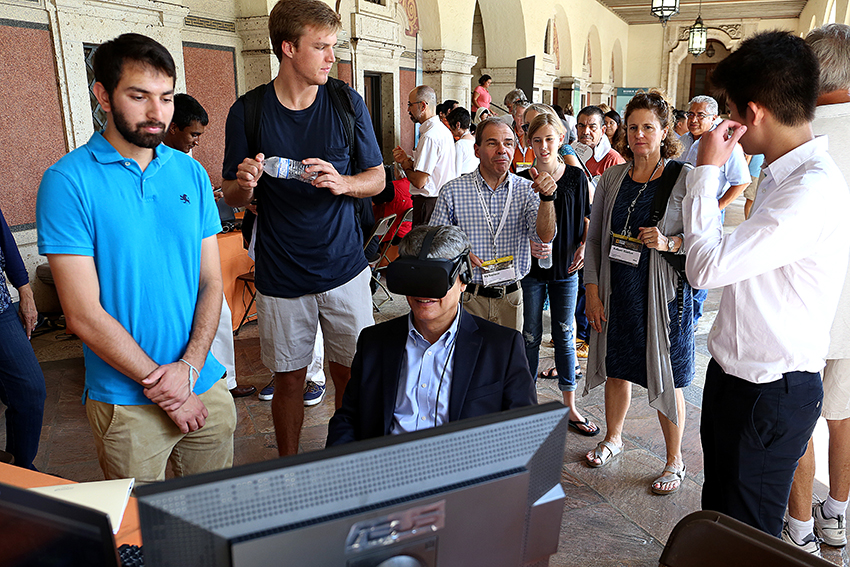UT students presented five projects Saturday at the Texas Tribune Festival’s Innovation Showcase to share their cutting-edge research with peers and bystanders.
Dreamer Robot
The Dreamer robot, a service robot developed by the Cockrell HumanCentered Robotics Lab, as created so that it could safely interact with humans.
The robot, with animated features and accurate camera eyes, can sense and react to force and movement. Mechanical engineering graduate student Kwan Suk Kim said he can see applications for these features in the service industry.
“The robot can sense the force being applied to it and interact back with a similar, safe amount of force,” Kim said.
Longhorn Maker Studios
The Maker Studio, located in the Engineering Teaching Center, is home to tools such as 3D printers, laser cutters and even sewing machines.
Sophomore mechanical engineering major Daniel Teal has used the Maker Studio for robotics competitions, while junior mechanical engineering major Erik Furton used its sewing machines.
“I’ve sewed a couple of shirts … I don’t really know what I want to make in the future, but the space is open for me to use it,” Furton said.
ReNeu Robotics Lab
The ReNeu Robotics Lab of the Cockrell School of Engineering presented a robot called Maestro, a device worn on a person’s hand which measures pressure and enacts force to allow precise movement for the user.
Mechanical engineering graduate students Paria Esmatloo, Youngmok Yun and Priyanshu Agarwal began their work with Maestro when they realized unstable hands were a huge problem for the disabled.
“The challenge was to create a universal device, and to create something that could measure and control pressure — something that hadn’t been done before,” Agarwal said. “We ended up creating something that allowed rehabilitation and hand function at the same time.”
Gaming Demo
The Game and Mobile Media Applications project featured several different gaming projects, including senior studio art major Christina Curlee’s Ginsberg game.
“It was inspired by a poet I like, Alan Ginsberg, and I used the language of games and the language of art to untraditionally combine them,” Curlee said. “There’s also a sound component to this — when you hit microphones in the game, you can hear him reading his poetry.”
Curlee said she finds game development an interdisciplinary art form.
“Games aren’t all about ‘you go and kill something.’ I’m inspired to make games about something more than just reaching a specific goal, or just eliminating something,” she said. “I really want to bring art into somewhere where people are trying to tell stories, but yet stays interactive.”
Virtual Reality
The Moody College of Communications is delving into a new era of interactive media through integrating virtual reality with journalism by using 3D space within the Oculus Rift.
“Our software is basically a plug-in for a game engine called Unity that will enable journalists to create 360-panoramic videos. This edits panoramic videos by adding text, pictures and other 3D objects, and it also allows you to connect to other 3D bubbles as well … giving a level of interactivity to news media,” said computer science junior Justin Segler.
Joanne Kim, a senior Spanish major, said she was amazed by the project and the overall showcase.
“I have always been interested in VR, but I was shocked that they were collaborating with the Washington Post,” Kim said. “Seeing projects outside of my specialty is really cool. I honestly didn’t realize how much UT had to offer.”
Furton, from the Longhorn Makers Studio, said the Innovation Showcase helped him to see the real possibilities of new technology.
“In [science], you learn a lot of textbook stuff, but this makes it come to life,” Furton said.















